BabyLiveAdvice, LLC: Who said babies don't come with instructions?
BLA service closes current care gap by using technology and care collaboration to provide the right care, at the right time, to every mom and child preventing Maternal -Child morbidity and mortality.
Calabasas, CA United States Equity Raise AMIA2019 challengeAbout our project

The problem we solve: Every year in the U.S., nearly 4 million women give birth, the vast majority without anything going amiss for themselves or their babies. But more than 135 expectant and new mothers a day — or roughly 50,000 a year, according to the Centers for Disease Control and Prevention — endure dangerous and even life-threatening complications that often leave them wounded, traumatized, financially devastated, unable to bear more children. The annual cost of these near deaths to women, their families, taxpayers and the health care system runs into billions of dollars.A report from the Commonwealth Fund released in December found American women have the greatest risk of dying from pregnancy complications among 11 high-income countries.What’s worse, there are massive disparities. Black women are three to four times more likely to die in childbirth than white women — regardless of education, income, or any other socio-economic factors. This is the primary reason the United States lags so far behind.
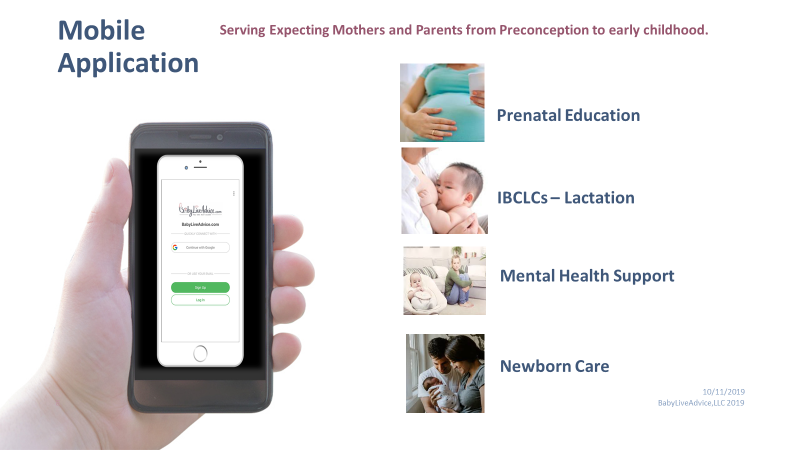
About our solution: According to many studies 60% of all Maternal-Child morbidity and mortality cases are preventable. BLA Will Partner with health care systems and providers to reduce Maternal and Infant Morbidity and Mortality by providing virtual prenatal/postnatal education, monitoring of chronic conditions (DM, HTN), smoking and substance abuse cession, nutrition and mental health screening and support, lactation support and parenting education.
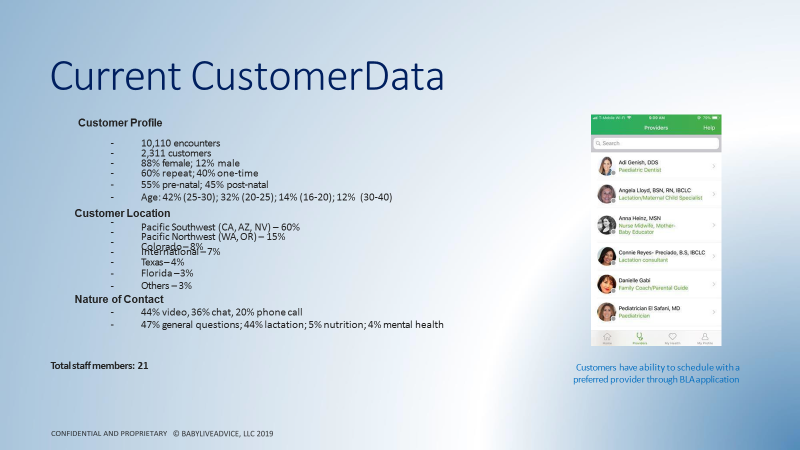
Progress to date:
BabyLiveAdvice application was piloted in three large pilots and showed tremendous reduction in pre and postpartum complications, reduction in C-section rates, NICU admission, adherence nutritional program and breast feeding. Patient satisfaction rate with the services was also very high. Women using BLA application reported reduction in anxiety and stress, improve knowledge regarding birthing options, nutrition in and post pregnancy, parenting preparedness, lactation and overall feeling of support. Launched in September 2018 BabyLiveadvice and cared for over 3000 women successfully. We also white label our application to other organizations who are providing care to their patients using their providers. We are negotiating currently with major insurance companies, hospital systems, employers groups and others feedback on our product is very very positive.
About Our Team

Creator: Sigalit Marmorstein
Location: California
Education: USC school of Nursing
Bio: Sigi Marmorstein MSN, FNP CEO Telehealth Consulting Services Founder, CEO of BabyLiveadvice.com Sigi Marmorstein is a Telehealth Consultant with over 60 Successful Telehealth Implementation projects. Her role as a Telehealth Consultant is the culmination of a 20-year career in health care spanning employers such as Davita, Kaiser Permanente, USC, Adventist Health and West Coast University. Sigi has years of experience in the health care industry as an emergency room provider, operations manager, project management, business owner as well as academia. Consistently throughout her diverse career she remained devoted to finding solutions to improve patient access to care. Sigi is the founder and CEO of multiple companies such as MedCareLive.com, BabyLiveAdvice and Telehealth Consulting Services. She is recognized in several publications and a recurring, invited speaker on Telehealth at key conferences. She serves on the Nursing advisory board at HRSA, member of the AANP, CANP and the California Action Coalition and still moonlight in ER as a Nurse Practitioner. “I started Baby out of my own experience as a mother. I was an NICU/Peds nurse when I first became a mother and a nurse practitioner with my second. Although I was educated and receiving care at Kaiser. My boys and I had gone to harsh labor experiences, and both ended up in NICU. I remember dealing with my pregnancies and later with motherhood with much anxiety and stress. Reading all I could read, asking a lot of questions and needing much more questions answered. As a Nurse and a Nurse practitioner I met with mom who were less knowledgeable and had little or no access to care and I saw that they suffered like me. I started “baby” in hope that I can solve their problems. Through demonstration projects and pilots, I found out that my assumptions were right and that BLA can increase access to care, reduce adverse health outcomes and help women and families better cope with pregnancy and parenthood”
Title: Founder, CEO
Advanced Degree(s): RN, MSN, PHN, FNP
About Team Members
Milton Chen
CEO, FOUNDER VSee , PHD
Biography: Milton is a co-founder and CEO of VSee – the only approved video telehealth platform used by NASA astronauts aboard the International Space Station. He did his PhD at Stanford University where he researched human factors and design of video collaboration. Milton is also the co-author of the XMPP video standard, and XMPP is used by Google and Facebook Chat. He has deployed VSee for Hillary Clinton, Angelina Jolie, Linkin Park, and President Obama’s inauguration. Milton has been to Iraq, Nigeria, Gabon and Philippines working in refugee camps and homeless shelters to provide telemedicine.
Title: CEO, FOUNDER VSee
Advanced Degree(s): PHD
LinkedIn:
https://www.linkedin.com/in/miltonchen/
Jim Finkelstein
President and CEO at FutureSense, LLC, MBA
Biography: Jim is a student and leader of people in business. With 40+ years of consulting and corporate experience, he understands the convergence of environment, culture, development and rewards in order to improve business performance through people. He has specialized in business strategy, organization strategy and people strategy, motivation and reward, compensation, organizational development, organization design, leadership assessments, communications and transformation. He has applied his competencies in all areas that impact people at work – from why they show up to why they stay. He has worked for diverse industries – from health care to high tech. He has built programs and provided services to Boards of Directors, senior executives, management and employees.
Title: President and CEO at FutureSense, LLC
Advanced Degree(s): MBA
LinkedIn:
https://www.linkedin.com/in/jimfinkelstein/
Mark Winter
Principal at Telehealth Consulting Services, Inc., MBA
Biography: Mark brings over 30 years of experience to his new company, CareSpan, which provides direct medical care to remote populations in the United States through their unique tele health system. Mark previously served as the executive Prize Lead for the XPRIZE Foundation and managed both the Nokia Sensing XCHALLENGE and Qualcomm Tricorder XPRIZE which are focused on catalyzing innovation in health sensing and diagnostic systems for consumers.
Title: Principal at Telehealth Consulting Services, Inc.
Advanced Degree(s): MBA
LinkedIn:
https://www.linkedin.com/in/mark-winter-carespan/
About Our Company
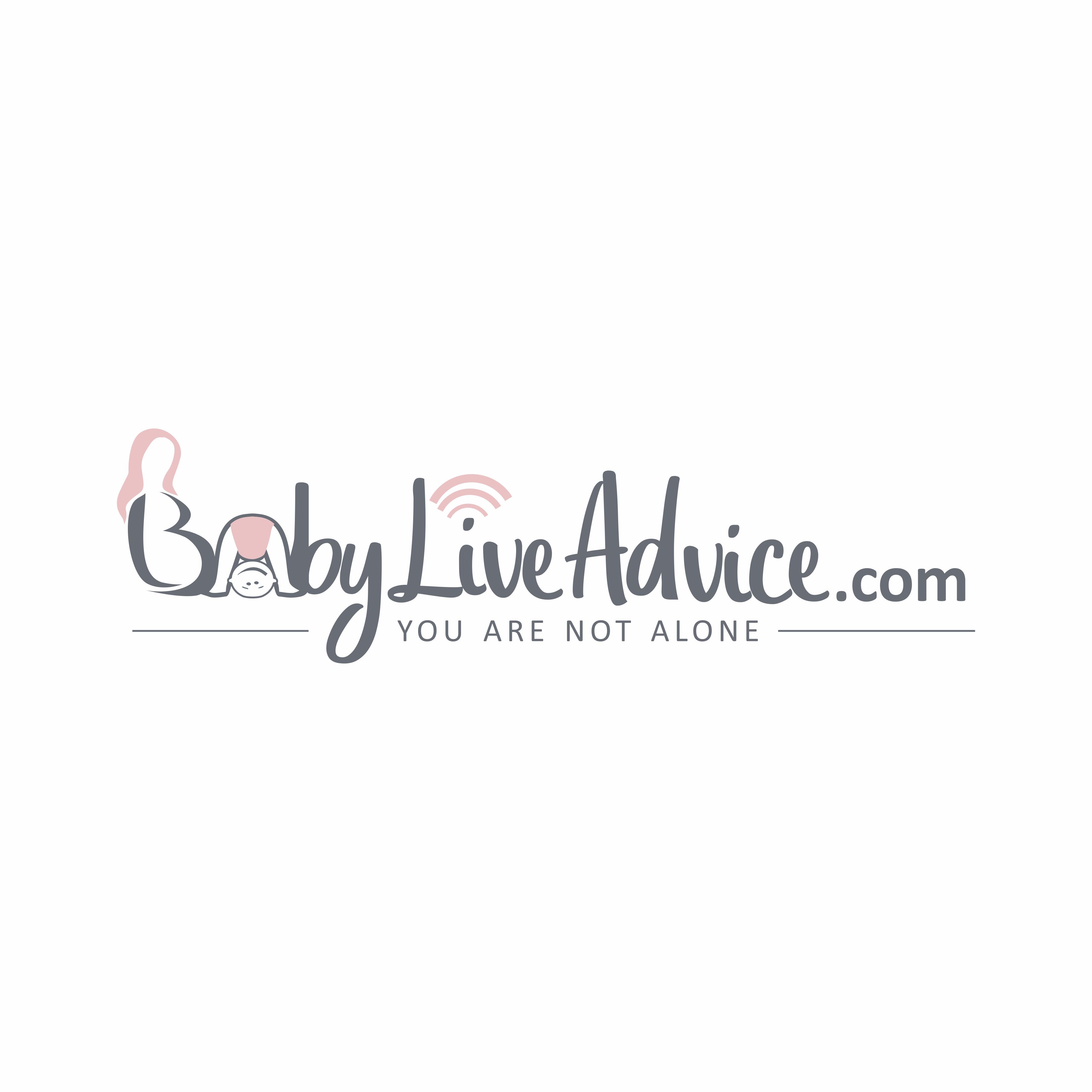
BabyLiveAdvice, LLC
Location: 4650 PARK MIRASOL
Calabasas, CA 91302
US
Founded: 2018
Website: https://www.babyliveadvice.com/
Product Stage: In the Market
Employees: 20-50
How We Help Patients
Many uncoordinated resources exist in our current public and private health care system, that leads to higher cost of provision of services with poor outcomes. Reduced access to timely care increases the disparities in health provision and education for prenatal and postpartum moms. “An optimal system of family supports would strategically layer an array of effective evidence-based, innovative, and community-responsive resources that assists in achieving strong outcomes for all families. In addition to offering high-quality interventions, this full suite of supports would be offered in a coordinated manner that would facilitate access for families to the full set of community resources each family may need” Los Angeles County Department of Public Health & Health Agency executive summary July, 2018
There are over 12,000 sites for baby care, products, support groups, blogs and chats online today. Parents are overwhelmed by the amount of content, written or blogged information, and are confused by information received. The information does not pertain to the parent's questions or concerns, which in turn increases anxiety and frustration. The extensive literature review conducted into the area of parent/infant education shows that pregnant women and new parents are underinformed or misinformed regarding their pregnancy, childbirth options, breast feeding and infant care. Physicians and pediatricians are unable (due to time constraints and full schedules) to spend time advising, educating or providing answers to the many questions that parents have regarding childbirth, and infant to toddler care. Early discharge from hospitals post-partum reduces the time allowed to educate mom/parent and provide support through breast feeding and overall baby care which widens the knowledge gap. There is also the “loss of the village” lack of social support and much isolation experienced by many mothers/parents. Unfortunately, and due to all the above, extensive portions of the population navigating the experience of childbirth and infant care do so with great anxiety and in need of assistance, with no central source to respond to their many questions and various needs.
Our application can improve Antenatal and Postnatal care by providing virtual advice and support to those parents and families from pre-conception to early childhood:
-
- Tele-Health support is an innovative strategy for supporting both high and low-risk families for lower cost.
- Establishing a Tele- Support system helps foster a norm of parents seeking and accessing support, when they need it, not when it is available.
- Tele-Health can help high-risk families navigate to the additional supports they need helping them understand how to access existing health and social service systems.
- Families with young children need access to different kinds of help as their children grow and change. Having a large variety of virtual providers at their home will support them from pre-conception to early childhood.
- Rearing questions can be answered in one place by specialists rather than by written information.
- Reduce Isolation, frustration, anxiety and doubt by having professional advice at the fingertips. This will also reduce adverse health outcomes such as child neglect and abuse, parental depression and substance abuse, poor parenting, SIDS and more.
How We Help Physicians
Physician burn out in Maternal Child health had reached 48% according to the American Association of Family Physicians report July 2018. Fueled by long working hours, EMR charting, heavy call volume, large malpractice law suites in the space and heavy patient loads of up to 30 patients per day. In maternal child health particularly at the prenatal periods physicians needs to spend more time education and consulting women which requires more than the allowed 15 minutes per appointment.
The lack of health education, coaching and support of the prenatal mom is associated with 60% of Maternal child morbidity and mortality cases according to the CDC. Babyliveadvice can partner with OB/GYN and Pediatrician as extenders of care or panel partners. Since we DO NOT assume care of patients, we can be BLA serves as the “the eyes and ears” on the patient for busy Obstetricians and GPs. We engage with new and expecting parents to monitor and mitigate risks. We escalate clinical issues rapidly to the care team, improving timeliness/efficiency. Our process helps to reduce high-cost interventions & hospitalizations that impact capitated-care economics. By taking on calls on weekends and evenings we can support the practice of the physicians and reduce burn out and fatigue. We can help physicians support populations that are in rural communities and reduce travel time to their offices. Since we have nutritionists, social workers, mental health providers and nurses our ability to support a mother throughout a pregnancy is greater than that of the individual physicians which will improve the overall outcomes, reducing risk and thus mal-practice law suites.
" placeholder="" maxlength="2000">
Physician burn out in Maternal Child health had reached 48% according to the American Association of Family Physicians report July 2018. Fueled by long working hours, EMR charting, heavy call volume, large malpractice law suites in the space and heavy patient loads of up to 30 patients per day. In maternal child health particularly at the prenatal periods physicians needs to spend more time education and consulting women which requires more than the allowed 15 minutes per appointment.
The lack of health education, coaching and support of the prenatal mom is associated with 60% of Maternal child morbidity and mortality cases according to the CDC. Babyliveadvice can partner with OB/GYN and Pediatrician as extenders of care or panel partners. Since we DO NOT assume care of patients, we can be BLA serves as the “the eyes and ears” on the patient for busy Obstetricians and GPs. We engage with new and expecting parents to monitor and mitigate risks. We escalate clinical issues rapidly to the care team, improving timeliness/efficiency. Our process helps to reduce high-cost interventions & hospitalizations that impact capitated-care economics. By taking on calls on weekends and evenings we can support the practice of the physicians and reduce burn out and fatigue. We can help physicians support populations that are in rural communities and reduce travel time to their offices. Since we have nutritionists, social workers, mental health providers and nurses our ability to support a mother throughout a pregnancy is greater than that of the individual physicians which will improve the overall outcomes, reducing risk and thus mal-practice law suites.
" placeholder="" maxlength="2000">
Physician burn out in Maternal Child health had reached 48% according to the American Association of Family Physicians report July 2018. Fueled by long working hours, EMR charting, heavy call volume, large malpractice law suites in the space and heavy patient loads of up to 30 patients per day. In maternal child health particularly at the prenatal periods physicians needs to spend more time education and consulting women which requires more than the allowed 15 minutes per appointment.
The lack of health education, coaching and support of the prenatal mom is associated with 60% of Maternal child morbidity and mortality cases according to the CDC. Babyliveadvice can partner with OB/GYN and Pediatrician as extenders of care or panel partners. Since we DO NOT assume care of patients, we can be BLA serves as the “the eyes and ears” on the patient for busy Obstetricians and GPs. We engage with new and expecting parents to monitor and mitigate risks. We escalate clinical issues rapidly to the care team, improving timeliness/efficiency. Our process helps to reduce high-cost interventions & hospitalizations that impact capitated-care economics. By taking on calls on weekends and evenings we can support the practice of the physicians and reduce burn out and fatigue. We can help physicians support populations that are in rural communities and reduce travel time to their offices. Since we have nutritionists, social workers, mental health providers and nurses our ability to support a mother throughout a pregnancy is greater than that of the individual physicians which will improve the overall outcomes, reducing risk and thus mal-practice law suites.
" placeholder="" maxlength="2000">
Physician burn out in Maternal Child health had reached 48% according to the American Association of Family Physicians report July 2018. Fueled by long working hours, EMR charting, heavy call volume, large malpractice law suites in the space and heavy patient loads of up to 30 patients per day. In maternal child health particularly at the prenatal periods physicians needs to spend more time education and consulting women which requires more than the allowed 15 minutes per appointment.
The lack of health education, coaching and support of the prenatal mom is associated with 60% of Maternal child morbidity and mortality cases according to the CDC. Babyliveadvice can partner with OB/GYN and Pediatrician as extenders of care or panel partners. Since we DO NOT assume care of patients, we can be BLA serves as the “the eyes and ears” on the patient for busy Obstetricians and GPs. We engage with new and expecting parents to monitor and mitigate risks. We escalate clinical issues rapidly to the care team, improving timeliness/efficiency. Our process helps to reduce high-cost interventions & hospitalizations that impact capitated-care economics. By taking on calls on weekends and evenings we can support the practice of the physicians and reduce burn out and fatigue. We can help physicians support populations that are in rural communities and reduce travel time to their offices. Since we have nutritionists, social workers, mental health providers and nurses our ability to support a mother throughout a pregnancy is greater than that of the individual physicians which will improve the overall outcomes, reducing risk and thus mal-practice law suites.
How We Help Hospitals
Provision of virtual Antenatal and Postnatal care can possibly benefit the health care system by providing:
- Access for rural and underserved communities
- Access afterhours/weekend care
- Increase patient satisfaction
- Improve health outcomes
- Reduce Physician burnout
- Improve Pay for Performance revenue
- Provide option for remote clients
- Reduce ER utilization
- Reduced specialty referral costs
- Reduce post-partum complication
- Increased savings = bonus revenue
- Help meet value-based quality metrics
- Reduce Hospital readmissions
- Reduce bed - days
- Reduce C-section rates
- Improve quality
- Improve shareholders perception
How We Help Partners
In a perfect world, companies would take action to improve maternity care because they value the contributions of their female employees, as well as the principle of equal opportunity and the long-term health of American families. But in practice, there is also a strong bottom-line argument for reforming maternity care: the cost to U.S. companies from replacing female employees who quit, covering long-term healthcare for mismanaged pre/postpartum problems, dealing with absenteeism and reduced productivity during pre/postpartum struggles, and settling lawsuits adds up quickly to billions of dollars of losses which plainly merit preventive action
In America, more than 75% of expecting mothers say that they are excited to go back to work after giving birth, but 43% of them end up leaving their careers. Of the new moms who do return to work after giving birth, 50% switch to a lower-paying job at a family- friendly employer. Quitting their jobs is often a disappointing outcome for women, and it’s also a costly outcome for companies. Replacing an employee who leaves after childbirth can cost anywhere from 20% to 213% of an employee’s annual salary.
World Health Association (WHO) in recommending that all infants breastfeed exclusively for the first six months. But two months after giving birth, mothers report that their return to work is their top reason for ending breastfeeding. While 73% of women in the U.S. choose to breastfeed after giving birth, only 33% continue breastfeeding exclusively throughout the first three months, and women returning to work are more than twice as likely to quit as women staying at home. In the end, less than one out of five of American mothers ends up breastfeeding exclusively for the full six months recommended by the WHO and the AAP.
Most companies are now required by law to provide lactation rooms in the workplace. When Mutual of Omaha offered a lactation support program, they ended up spending $2,146 less on healthcare costs for each woman who enrolled, which gave yearly savings of $115,881. Furthermore, women who know that their work environment is compatible with their breastfeeding goals are substantially less likely to be absent from work and less likely to quit. Companies with comprehensive lactation support programs have a post-maternity retention rate of 94%, compared to national average of just 57%.
Challenge Mission
Affiliation(s)
none
Key Milestones Achieved and Planned
Babyliveadvice had been piloted since 2014 in various clinical setting with excellent results. We had 11,500 interaction to date. We signed a white label contract with FPA women’s health and in negotiation with large employer groups and medical groups. We up to 21 providers. We #1 position on google. Our site is been visited average of 71 times a day. We are trading up in social medial organically (none paying ads).
Our Competitive Advantages
BLA is already built and launched on the VSee platform (www.vsee.com). This is an exceptional competitive advantage in that not only is VSee one of the most robust telemedicine sites, but also, Dr. Milton Chen, one of VSee’s founders in on the Board of Directors of BLA. This is a strong endorsement and a major barrier to entry to other potential competitive businesses.
Additional competitive advantages and subsequent barriers to entry to potential competitors is the deep expertise in telehealth that resides in our founder, Sigi Marmorstein. Sigi has 20 years of clinical practice as a Nurse Practitioner in various clinical settings including ER and Family Practice and as an Entrepreneur and in Academia. Sigi has set up over 60 successful Telehealth programs for large hospital and health delivery systems such as Kaiser, DaVita, Intramountain, C
Barriers to Entry
BLA is already built and launched on the VSee platform (www.vsee.com). This is an exceptional competitive advantage in that not only is VSee one of the most robust telemedicine sites, but also, Dr. Milton Chen, one of VSee’s founders in on the Board of Directors of BLA. This is a strong endorsement and a major barrier to entry to other potential competitive businesses.
Funding, Partners and Alliances To Date
We are self funded to date. We have not yet raised money and are now only starting to seek investment to support our growth.
Revenue
YTD we are in revenue. Our primary source of revenue is patients visits and subscription. Our revenue projections for next year exceed $500,000 and will primarily be from subscription and our growing B2B sales to employer groups, large none profits and insuarnce carriers. We expect the employer market, insurance market and the none profit market to channel significant growth over the next three years, expanding revenue to over 2-5M per year. Hospital sysytems may want to partner with us but we are not directing our efforts there.
Innovation Details
Intellectual Property Summary
Intelectual property includes our website, SASS aplication, Logo, all our written information, blogs, pictures.
Clinical Information
The data on American mothers dying from pregnancy-related and pregnancy-associated causes are at once shameful and heartbreaking. Across the board, no developed nation has the rate of maternal deaths that we in the United States suffer. American women are three times more likely to die during pregnancy, delivery, or within one year of giving birth than women in Canada. The maternal mortality rate has been increasing steadily — it increased nearly 27 percent from 2000 to 2014.
A report from the Commonwealth Fund released in December found American women have the greatest risk of dying from pregnancy complications among 11 high-income countries.What’s worse, there are massive disparities. Black women are three to four times more likely to die in childbirth than white women — regardless of education, income, or any other socio-economic factors. This is the primary reason the United States lags so far behind other affluent countries. According to the World Health Organization, black mothers in the U.S. die at the same rate as pregnant women in Mexico or Uzbekistan.
Yes, it is about race: pervasive racial gaps in income, education and opportunity still scar our nation. Yet the usual indicators of persisting discrimination in the United States do not fully explain African American maternal mortality. Even after controlling for income, gestational age, maternal age and health status, the odds of dying from pregnancy or delivery complications are almost three times higher for African American women than for non-Hispanic white women. Institutional bias, both express and implicit, means that African American women are likely to receive different and not better, prenatal and postnatal care than their white counterparts.
Every year in the U.S., nearly 4 million women give birth, the vast majority without anything going amiss for themselves or their babies. But more than 135 expectant and new mothers a day — or roughly 50,000 a year, according to the Centers for Disease Control and Prevention — endure dangerous and even life-threatening complications that often leave them wounded, traumatized, financially devastated, unable to bear more children. The annual cost of these near deaths to women, their families, taxpayers and the health care system runs into billions of dollars.
For the past year, ProPublica and NPR have been examining why the U.S. has the highest rate of maternal mortality in the industrialized world. According to analysis from nine maternal mortality review committees, over 60 percent of pregnancy-related deaths were preventable. The maternal mortality rate is for the most part at its highest in states with weak health care systems, rural communities and in hospital who do not carry baby friendly designation.
Extensive research into the area of parent/infant education shows that pregnant women and new parents are under informed or misinformed regarding their pregnancy, childbirth options, breast feeding and infant care. In one 2016 study of all women admitted for delivery over a period of 30 months at Cedars-Sinai Medical Center in Los Angeles, researchers found "opportunity for improvement in care" in 44 percent of life-threatening complications related to pregnancy and childbirth. Education, monitoring of chronic condition, timely prenatal care, mental health support, substance abuse and smoking session education and other important prenatal and postnatal interventions found to be especially helpful in prevention of these outcomes. Physicians and pediatricians are unable (due to time constraints and full schedules) to spend time advising, educating or providing answers to the many questions that parents have regarding childbirth, and infant to toddler care. Early discharge from hospitals reduces the time allowed to monitor and educate mom/parent widens the knowledge gap and place mom and baby at risk.
So what can be done? It does not have to be like this. Expert groups over the past decade keep calling for more research, more data collection and more study committees. Enough already. It is time to stop talking and start doing.
The goal, on the most fundamental level, is to save the lives of mothers and their babies. Broadly, we should at least be capable to close the gap by using technology and care collaboration at it's highest level to provide the right care, at the right time, to every mom and child regardless of location, race, economic status and access to care providers. I strongly believe we can get there
Regulatory Status
N/A
How we will use the funds raised
Funds are required to increase marketing efforts for both our direct to customer strategy as well for our direct to business strategy. We would like to set up a marketing force that will help us get to a million moms. The goal, on the most fundamental level, is to save the lives of mothers and their babies. Broadly, we should at least be capable of bringing United States maternal death rates to a level consistent with the rest of the developed world.
Thank You
“Improving the well-being of mothers, infants, and children is an important public health goal for the United States. Their well-being determines the health of the next generation and can help predict future public health challenges for families, communities, and the health care system” CDC healthy people 2020. The data on American mothers dying from pregnancy-related and pregnancy-associated causes are at once shameful and heartbreaking. Across the board, no developed nation has the rate of maternal deaths that we in the United States suffer. As a mom and tenured nurse practitioner working in many different clinical settings in Los Angeles, I discovered the power of Telehealth, in removing barriers to care access, and identified the overwhelming need to assist mothers/parents facing the challenges of caring for infants/toddlers. My newest venture is a perfect marriage of technology and need. BabyLiveAdvice supports women at risk, single mothers, teenage moms, homeless mothers and others. It is accessible, available and affordable. All providers on the site are licensed clinicians (and mothers) from all clinical and cultural backgrounds who like to work and care for others while caring for their families as well. The goal, on the most fundamental level, is to save the lives of mothers and their babies. Broadly, we should at least be capable to close the gap by using technology and care collaboration at its highest level to provide the right care, at the right time, to every mom and child regardless of location, race, economic status and access to care providers. I strongly believe we can get there.
Investor Info
Market Size
Target Market
Our end-user customer target market includes moms, dads, partners and anyone who has or is anticipating a baby in their life and is over the age of 16. This includes grandparents who have responsibility for children. Our services provide virtual advice and support to those parents and families from pre-conception to early childhood.
There are just shy of 4 million babies born in the U.S. every year. Worldwide there are slightly more than 131 million births every year. (https://www.reference.com/world-view/many-people-born-year-a3b954e09711ef51). This gives us great potential to serve millions.Pregnancy is the number 2 cause of hospitalization.The number of neonatal intensive care beds in the U.S. grew by 65% from 1995 to 2013.
Projected 3 Year Growth
BLA has established a productivity goal to attain by the end of five years (2023):
- 50 active providers (FTEs).
- Each provider FTE works 6 hours per day.
- Each provider FTE sees 4 customers per hour.
This yields 1,200 customer visits per day, 36,000 customer visits per month, 432,000 customer visits per year. Thus we can care for large populations That will bring 24M a year in revenu per year.
Revenue Model
Our end-user customer target market includes moms, dads, partners and anyone who has or is anticipating a baby in their life and is over the age of 16. This includes grandparents who have responsibility for children. Our services are applicable from pre-conception to early childhood. There are various channels to get to this ultimate end-user market. They include, but are not limited to the following:
- Health care providers. We will seek contracts and strategic alliances with public health, large hospitals, community hospitals, physician groups (including Obstetrics/Gynecology practices), mental health providers, etc. This provides an indirect channel to the consumer through a trusted third party.
- Hospital Systems. Hospitals are responsible to refer patients to the correct resources and provide continuous care. We can support lactation in and out of the hospital virtually, offer post-partum follow up visits virtually and of course support all new parent needs when it comes to baby rearing.
- Public Health Departments. Current public health systems are struggling to meet all the needs of the families they serve due to lack of social workers, mental health providers, doctors and nurses. Patients are unable to receive services due to lack of knowledge on navigating the system and/or lack of transportation. Virtual care can help these agencies to extend care to the home.
- Insurance carriers. We will also seek to embed our services into health benefit insurance contracts.
- Baby products. The worldwide baby products market (including toys, feeding accessories, wipes, disposable diapers, body care products and soothers) is approximately $74 billion (https://www.statista.com/topics/1259/baby-care-market/). We envision a great opportunity here for sponsorship, endorsement and advertising revenue. Many of these firms, including Johnson & Johnson and Proctor & Gamble, have “cause sponsorship” programs.
- Social media. There are more than 4 million mommy bloggers in North America alone. (https://www.forbes.com/sites/neilpatel/2016/11/03/9-things-we-can-learn-from-the-mom-blog-industry/#5a2032922181). While many of them come and go, they are still able to transform their blogging into influencer marketing. In addition to mommy blogs, there are over 12,000 sites for baby care, products, support groups and chats online. In addition, there are You Tube Videos, mom hacks, and other virtual forms of education. The reach out potential of leveraging social media into non-confusing, live advice about babies is massive.
- Academia. From pre-schools to universities and their student health centers, there is a wonderful opportunity to extend education to adults with live advice and support through the hard transition of pregnancy-labor-infant-toddler care.
- Employers. The employer market is a rich pipeline to our end customer as well. Large employers often seek to supplement their health offerings with well-being, wellness and other educational enrichment programs for their employees.
Competitors
- Maven Clinic – NY based – Online women health clinic following the American well/Md live model. Maven helps companies retain key talent and reduce maternity-related costs, back to work program, lactation, OB/GYN care, prescription.
- Nest – Online Lactation support for mom. Baltimore based.
- JustAnswer.com – chat service for all medical questions
Tiny hood- chat service with lactation consultant
Various Baby Application- mostly for tracking, sharing information, blogging - Pacify- Washington DC based application offering lactation and nurse advise line for $39/month membership. Up since 2015 has “under like” direct to consumer presence in DC area.
- Mahmee is a HIPAA-secure care management platform that makes it easy for payers, providers, and patients to coordinate comprehensive prenatal and postpartum healthcare from anywhere.
BLA is unique
• We do not compete with health systems or physicians; we are supporting the practice.
• We do not take over patient care or assume risk over patients.
• We provide multi-specialty providers in one place thus customers do not have to have many applications for different needs.
• We serve and support the entire family, that includes grandparents, adoptive, foster parents, fathers and mothers.
• A family can stay with BLA from preconception to early childhood (thus be with us for 5- 6-year duration). Increase care continuity, trust building and allow us to monitor health outcomes and collect real data.
• BLA is not just an application. We have a full online clinic/EMR and billing system. We can be used as a “turn-Key” solution to our partners to help them make the leap into digital health.
Our board of director and board of advisors are wining team of excellent professionals who can make thes eidea work and suceed.
Traction
To date BabyLiveAdvice have cared for over 2500 customers via chat, video, and phone. Some through pilots and some through direct to customer strategy. We are at number one position at google search with 5 start rating. We are growing our social medial presence daily. We signed a contract with FPA women’s health to while label our application. Currently in very progressive conversation with large insurance groups, employers’ groups, hospital systems and more.
Due Diligence Docs
Please note that access to the company's confidential materials is limited. Click this button to request access from the Company and its representatives.
Updates
No updates found .
Supporters
-
11/08/2019 - Liked the project.
11/08/2019 - Followed the project.
11/07/2019 - Liked the project.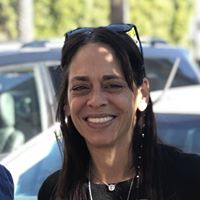
11/07/2019 - Liked the project.
11/05/2019 - Liked the project.
10/27/2019 - Liked the project.
10/21/2019 - Liked the project.
10/20/2019 - Liked the project.
10/19/2019 - Followed the project.
10/17/2019 - Followed the project.
10/17/2019 - Liked the project.
10/17/2019 - Liked the project.
10/16/2019 - Liked the project.
10/16/2019 - Liked the project.
10/16/2019 - Liked the project.
10/16/2019 - Followed the project.
10/16/2019 - Liked the project.
10/16/2019 - Liked the project.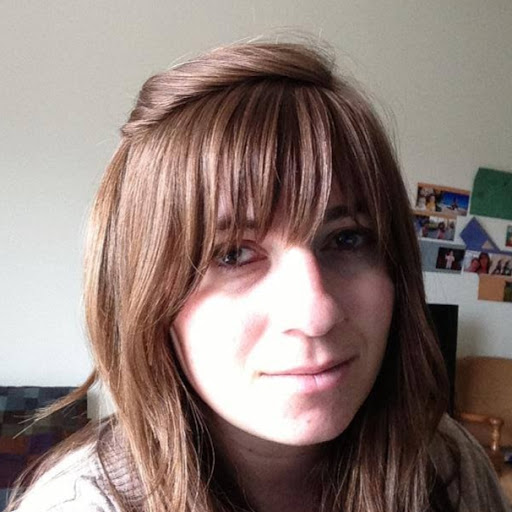
10/16/2019 - Liked the project.
10/16/2019 - Liked the project.
10/16/2019 - Liked the project.
10/16/2019 - Liked the project.
10/16/2019 - Liked the project.
10/16/2019 - Liked the project.
10/16/2019 - Liked the project. Instant Feedback
Instant Feedback
Help us find best new ideas to fund by telling us what you think. Your feedback goes straight to the team behind this project in private, so tell them what you really think.
96Medstartr
Index Score96
Interest
Score0
Adoption
Score25
Likes0
Partners0
Pilots4
Follows-
This campaign has ended but you can still get involved.See options below.
$ 500,000 goal
Instant Feedback
Help us find best new ideas to fund by telling us what you think. Your feedback goes straight to the team behind this project in private, so tell them what you really think.




